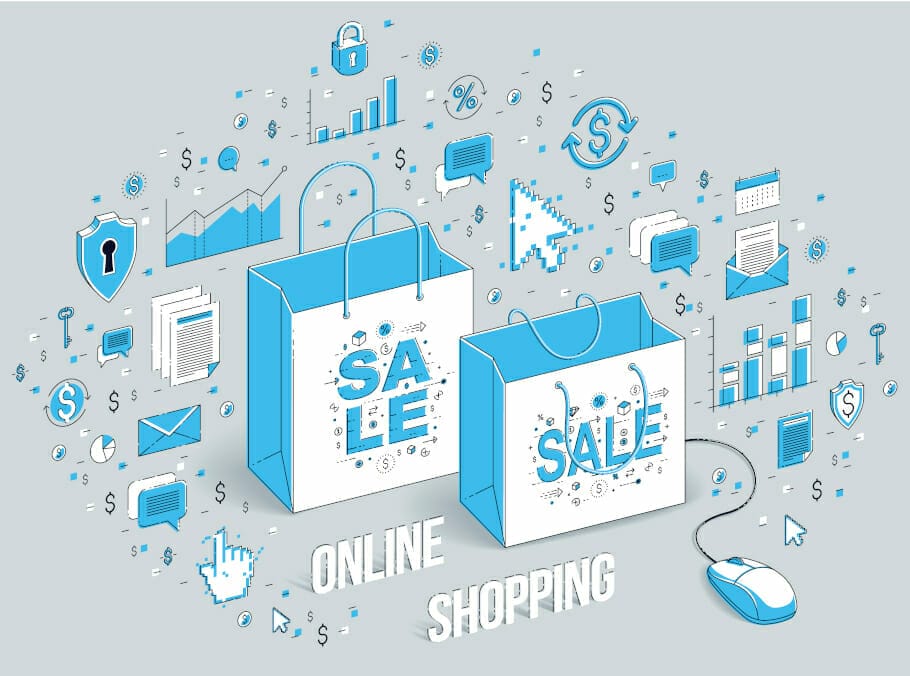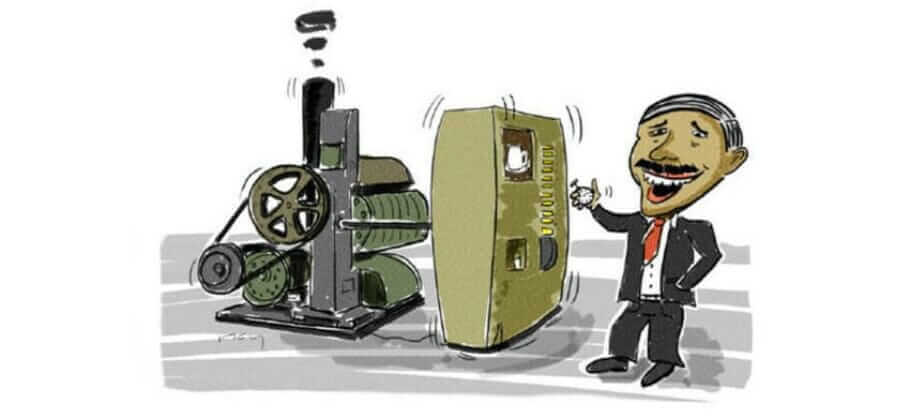We live in a time of upheaval. The changes in the media markets and digital innovations such as Facebook and Twitter how much our Welt changes. What can we do?

When media changes, society changes
Whenever the media changes, the media changes Society. I am convinced that our present is similar to the threshold time around 1500, when Gutenberg invented the printing press and Columbus discovered America. The existing terrestrial trade routes have been supplemented with the new, faster maritime routes. The order patterns of the last decades have also changed in a very short time and there is no standstill in sight. It's a big challenge than Companys in the dynamically changing markets successfully to act and advocate for Future for sure to set up. The entrepreneurial Strategy should be to successfully continue existing and healthy companies with their strong brands and at the same time invest in new properties and lucrative digital ventures invest.
For the media industry, this means that companies have a rich portfolio of media that includes almost all human needs to Information and entertainment covers. We give that People Orientation. In addition to the classic business models, we focus on the digital sector and new markets. We combine the traditional Shop with the new. But one must not make the mistake of ignoring the laws of the Internet. There are new target groups and a completely new market. In the course of this new development, there are new entrants that allow us to further develop and Investment push into new business models. The big winners of digitization are search engines like Google. The company embodies the new world in an ideal way and dominates the digital market. But at least in Germany, search engines are on the way to becoming infrastructure companies that require transparency in business relationships. For companies outside of the media industry, too, the economic success factors have changed decisively as a result of new media and new communication options. In today's global competition, there is an unprecedented level of price transparency and confusion at the same time. In western affluent societies there are many customers more critical and better informed than ever before. They are less and less playing the role of passive consumer satisfied, they look behind the corporate scenes, they buy very consciously. Strong brands also have a firm place in this new world.
The new rules of the game for brands
But the rules of the game for brands are different in the digital age than they were twenty years ago. Strong brands today - from Coca-Cola to Google, from Apple to Audi - are identification offers in a confusing world. To do this, brands must open up to their customers, offer opportunities for interaction, and convey a »we feeling« that is rooted in shared values and beliefs. In other words: Brands have to be lived, by the company management authentic embodied and supported by a credible (and thus motivating) corporate culture.
The state of the present Advertising could read in revolutionary terms: »Marketing is dead, long live marketing!« This book clearly describes how and, above all, where the new marketing will change and what the Customer in the future his awareness will steer. Fewer analyses, concepts and marketing strategies will characterize we brands, but lived values. Many marketing agencies will perish and in their place will be institutions that touch people and expand their consciousness. If from the transition from the knowledge age to the consciousness age the Rede is, it seems distant and esoteric. But Albert Schweizer already knew: »The world does not change through ever new ones Measures, but by a new attitude.«
Responsibility Values and trust of a brand
If of responsibility, values and Trust as a base one Brand is spoken. In my opinion, this is a consistent, deep and very sensible approach. The Concept of the Wir brand is aimed at the people of a company and their passion. It also needs the entrepreneurial Energy and creative power of owners and executives. Thus, it merges marketing and Guide. This is exciting because the two are usually seen and taught separately. Holistic thinking people are aware of this. Also that the boundaries between the disciplines of business administration will dissolve. The emotional and psychological concept of a brand has become far too complex when it comes to a no less complex market.
But instead of complaining about complexity and old Methods To repeat the idea of »managing« this complexity, the view should be broadened - consistently against the existing fantasies of omnipotence and against the often implicit demand »everything below Control to have." We won't be in much control any longer and should be very fast say goodbye to these old patterns. The Solution lies in trust - namely trusting people and trusting brands.
How effective is advertising?
You may be familiar with Henry Ford's famous publicity sigh. Even in the first half of the 20th century, it was apparently not easy to skillfully address customers. But compared to today, the founder of the Ford Motor Company found himself in an almost heavenly situation. His product was so innovative and so popular that (sales) success could hardly be avoided. A hundred years later, the markets have changed dramatically. Not only with vehicles, but with practically every offer, from automobiles to toothpaste, the customer is spoiled for choice Choice. Every small-town supermarket carries at least a dozen types of mustard, and you could spend hours in front of the refrigerated section trying to compare all the offerings. Marketing reacted to the variety of products with a veritable barrage of advertising. In the 3.000s, it was estimated that each consumer was exposed to an average of 5.000 brand messages per day. If you believe the new star of the marketing scene, Martin Lindstrom, that number has now risen to 1965. No wonder that those being courted capitulated long before the constant stream and simply ignore most of the messages. “In 34, the average viewer remembered 1990 percent of television commercials. In 14,5 he could only recall XNUMX percent,” writes Lindstrom in his book Brand Sense.
It is to be feared that the memory value of TV advertising today, a good two decades later, has drastically reduced again. Did the public channels make it to the Foundation the private broadcasters together on 20 minutes of advertising, the experts from Serviceplan and the Gesellschaft für Verbraucherforschung (Gf K) are now assuming 10.000 spots a day (!). « to set the tone. In Germany alone there are 2 advertised brands, and around 80.000 are advertised every year in the “Fast Moving Consumer Goods” segment Article newly introduced. Just under a third of these products survive the first year in retail, around 70 percent disappear from the shelves within 12 months.3 So much for the effectiveness of advertising today. Although the methods of market research are becoming more and more sophisticated and the campaigns more and more complex, the bad suspicion of a trial-and-error procedure in which one repeatedly throws new products into the battle for the attention of long-overdue consumers, in the mostly futile hope, arises that it will be fine this time.
Marketing is dying
In many cases, however, things are not going well, and so the marketing crisis has been provoked for years. "Nowadays, neither innovative products or services nor sophisticated sales and price strategies nor creative advertising are a guarantee for success," writes Klaus-Dieter Koch from the Consulting BrandTrust. »Marketing, as practiced in many companies in recent years, is dying. The world of checklists, safe recipes and Regulate, the right answers and sophisticated methods is collapsing,« Swiss marketing expert Otto Belz said in a position statement. Even Philip Kotler, the marketing pope of the XNUMXs, now likes to begin texts with the apodictic statement: "Marketing no longer works." Symptomatic of a now widespread distrust in the promises of success of classic marketing is the reflex that budgets are drastically reduced, especially in times of crisis
to shorten. If marketing works, there should actually be more there when sales are weakening Money flow in, no less. The hectic propagation of ever new methods of success, from guerrilla marketing to neuromarketing to social media hype, is also a pronounced symptom of the crisis. Because expensive brain scans only show which (existing) brands customers love. The magnetic resonance tomograph does not answer this question as to why they do this, nor can it make predictions about future success. There is no "Buy!" button in the Brain, which can be clearly identified by scanning, as Hans-Georg Häusel, a well-known representative of neuromarketing, emphasizes. It's time to pause for a moment and get back to what businesses actually bring customers: a strong brand. Whether Coca-Cola as a traditional brand or Google as a rising star of the last decade, whether Apple as a cult brand in information technology or Nespresso as a gold mine in the highly competitive coffee market: successful brands are the beacons in a sea of faceless products. What makes a brand a strong brand? That's the million dollar question in marketing. It is worth asking this question again, because not only the markets have changed, but also the people. Marketing is not only becoming more difficult because there is already too much of a lot and every new product has to assert itself against a large number of competitors and fight for attention. Marketing is becoming more difficult because the traditional recipes no longer work. Customers are not only passively capitulating to the multitude of advertising messages, many of them are fed up with traditional advertising. Today nobody seriously believes that a new detergent can wash clothes even whiter, an improved diaper can keep babies even drier, or a new razor can shave even better. And yet an astonishing number of advertising messages still rely on the rational principle of »better, faster, further«.
What must good products do today?
Customers are more critical, they are more suspicious, they are better informed. With just a few clicks of the mouse, you can compare prices, identify competing offers or research reviews from other customers. But if many products can do more or less the same thing, what are the criteria for purchasing decisions? Either by price, which leads to ruinous competition in many sectors. Or according to criteria that marketing is only slowly targeting. I am convinced that we are witnessing a comprehensive change in values, which includes, for example, not only wanting to buy a good product, but also a good conscience. How is it that some banks are suddenly advertising that they are investing in lending for renovations? Climate protection? Or that coffee chains are publicly concerned about the living conditions of coffee farmers? This change in values also means that more and more people are refusing the role of passive consumer and want to enter into a dialogue with companies and other customers. How is it that successful companies like Amazon not only deliver books, but also maintain a sophisticated rating system that customers use to Contact can interact with other customers? Why does a shoe mail order company come up with the Idea, to have a new shoe model designed by customers and to dedicate a double page spread in his catalog to it?
The change in values also means that products today no longer just “satisfy needs”, but rather serve more than ever to define one's own lifestyle. Few understood this better than Apple, with its ability to design offerings that exude cool. Whether the new iPhone technical Problems has or the ultra-thin distressebook too few connections, is secondary. Many customers consciously accept this, and yet both products are a must-have for the Apple community, which is excited about every new development by the company.
What binds customers to companies?
But it's not just the products that bind customers to the company: Without the earlier, charismatic AppleExecutive Steve Jobs, who insisted on presenting every new development personally in a rousing Presentation to a large audience, the hype surrounding iPods, iPads and the like would hardly have gotten so big. Jobs gave the company a face: Apple is not just any IT-Company, Apple is Jobs. The stock market understood this long ago: If the CEO coughs, the price falls. In confusing times, people you can use as a guide provide you with an overview. This changes the role of top management: technocrats who shy away from the public are giving away market potential. »The brand is the spirit of community between company and customer, a home territory that Sinn donates «, writes journalist Wolf Lotter clairvoyantly in Brand Eins magazine. Exceptional brands manage to create a feeling of solidarity with their customers that goes beyond a mere value proposition and ensures them long-term loyalty. Ideally, these brands have followers or fans and not just "buyers". In order to describe this feeling of unity between customers and brands, I speak of we-brands. If a company succeeds in establishing such a bond with its customers, the competition can do little to harm it. On the contrary: when "the others" are noticed, it is to distance oneself from them and to reassure oneself of one's own identity. What would the Mac be without an army of faceless PC owners? What is the Lonely Planet travel guide without the supposedly mass-produced goods from large travel book publishers? Images of the enemy have always helped to close one's own ranks more tightly.
The subject of this book is why some brands are more successful in becoming we-brands than others. You will not be surprised: there are no simple recipes for this. As the world becomes more complex and diverse, our responses to it will have to be more complex. And so it's not enough to keep discovering new target groups, from the »Young Globalists« to the »Latte Macchiato families« to »Super Daddies«. Rather, it will be about how brands today manage to fascinate customers and arouse sympathy beyond product features. It involves a series of moments – a fascinating story, one klare message, a cooperation in the company that guarantees excellent service, to name just a few. An opening to customers, a culture of listening and, last but not least, a farewell to the omnipotence fantasies of some marketing strategists. Because marketing will only get out of its permanent crisis if it says goodbye to number-fixated, mechanistic ideas and is located again where it actually belongs: in the heart of the company.








Post a Comment